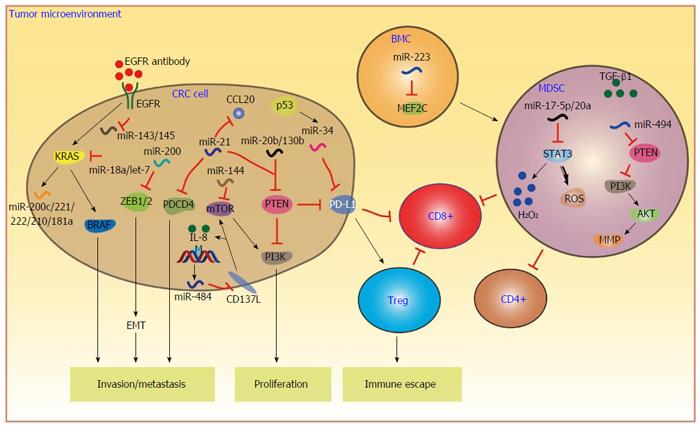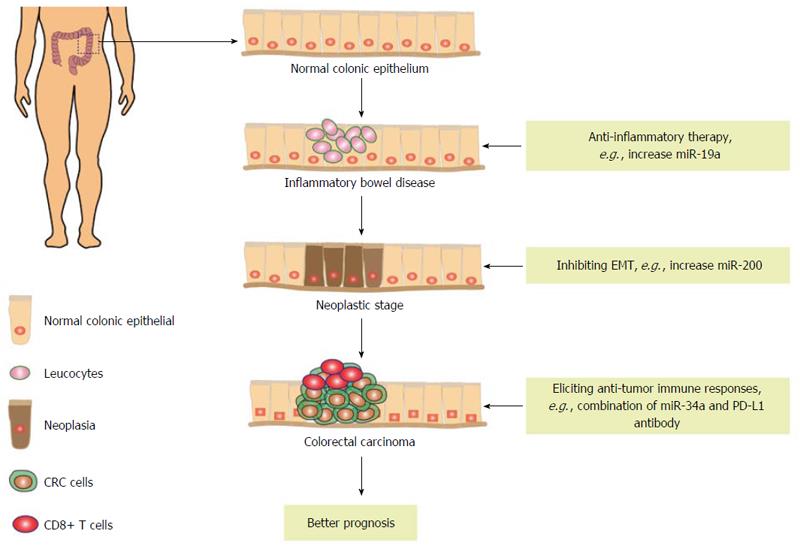Copyright
©The Author(s) 2016.
World J Gastroenterol. Jun 21, 2016; 22(23): 5317-5331
Published online Jun 21, 2016. doi: 10.3748/wjg.v22.i23.5317
Published online Jun 21, 2016. doi: 10.3748/wjg.v22.i23.5317
Figure 1 MicroRNAs control colorectal carcinoma progression through modulating anti-tumor immune responses in tumor microenvironment.
MiRNAs play important roles in colorectal carcinoma (CRC) biology, including tumor proliferation, invasion/metastasis and immune responses. For example, miR-20b and miR-130b repress the expression of PTEN and increase the activity of PI3K, leading to the increased viability of CRC cells. MiR-21 promotes CRC invasion and metastasis by directly targeting PDCD4. Furthermore, miR-34a enhances CD8+ T cells cytotoxicity by repressing the expression of PD-L1, contributing to the elimination of CRC cells by CTLs.
Figure 2 MiRNA-based immunotherapy in multi-steps colorectal carcinoma tumorigenesis.
Various immune-related miRNAs have been identified that are dysregulated during colorectal carcinoma (CRC) tumorigenesis. These findings can be used to prevent and treat CRC in different pathological stages. In IBD stage, miRNAs and their specific targets are ideally anti-inflammatory targets. For example, overexpression of miR-19a inhibits inflammatory response through targeting TNF-α. During the stage that normal colonic epithelium transforms to neoplasia, miRNA can be utilized to suppress EMT. For example, increased miR-200 reverses EMT and represses the neoplastic cells. In the CRC stage, in addition to traditional approaches, combination of immune-related miRNAs and existing immunotherapeutic strategies can elicit anti-tumor immune responses. For example, combination of miR-34a and PD-L1 antibody can eliminate tumor cells through eliciting tumor-infiltrating CD8+ T cells. The patients with CRC receiving miRNA-based immunotherapy will have better prognosis.
- Citation: Li X, Nie J, Mei Q, Han WD. MicroRNAs: Novel immunotherapeutic targets in colorectal carcinoma. World J Gastroenterol 2016; 22(23): 5317-5331
- URL: https://www.wjgnet.com/1007-9327/full/v22/i23/5317.htm
- DOI: https://dx.doi.org/10.3748/wjg.v22.i23.5317














